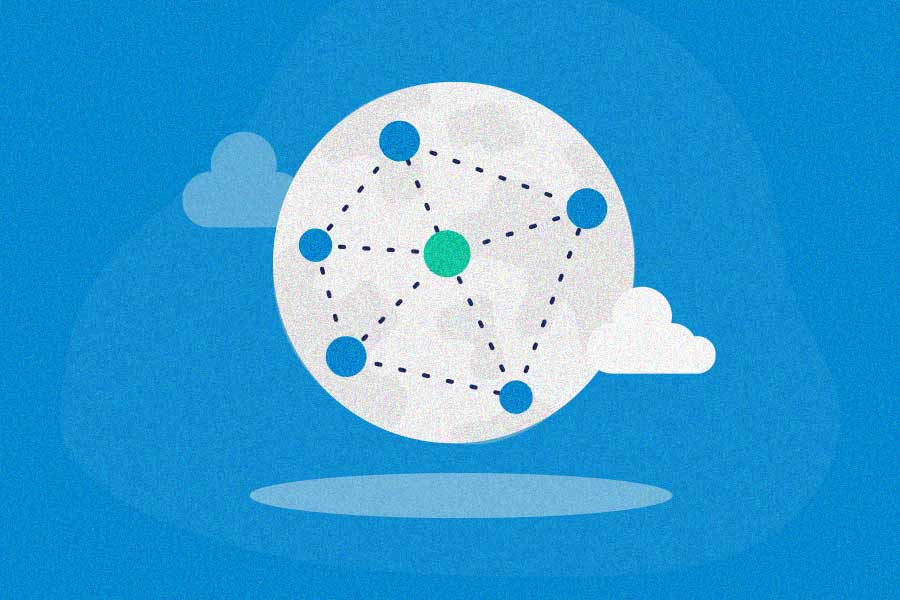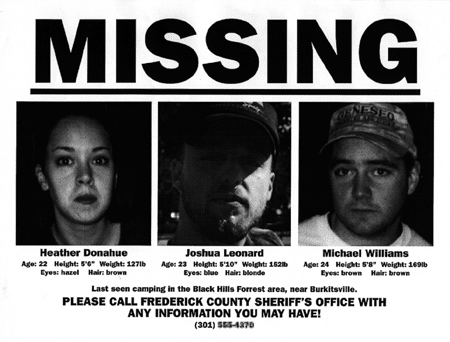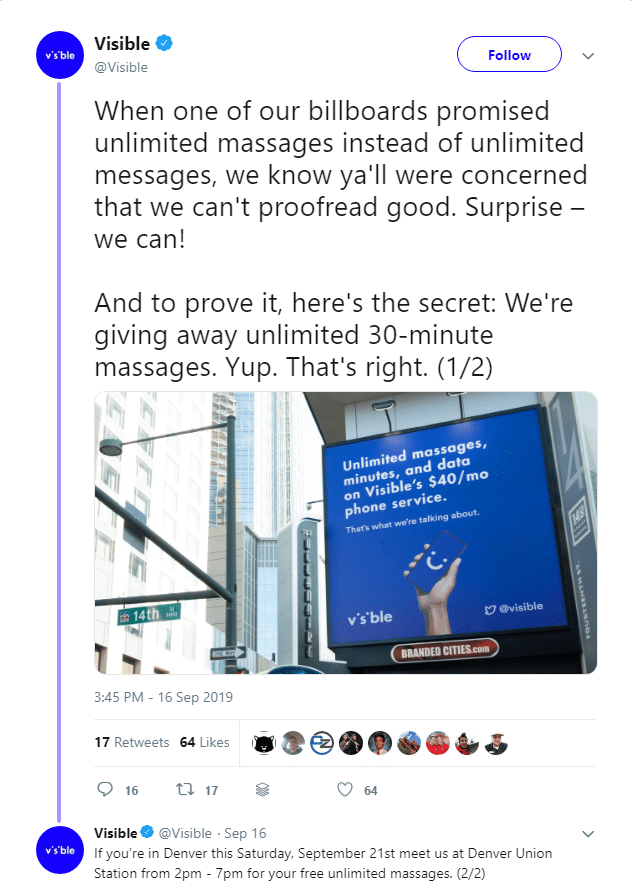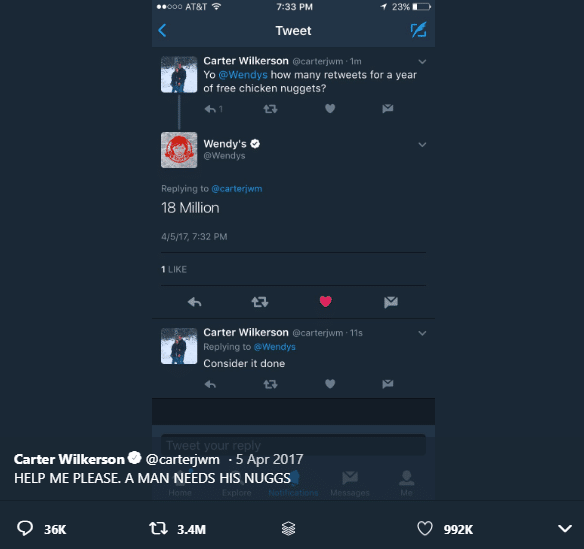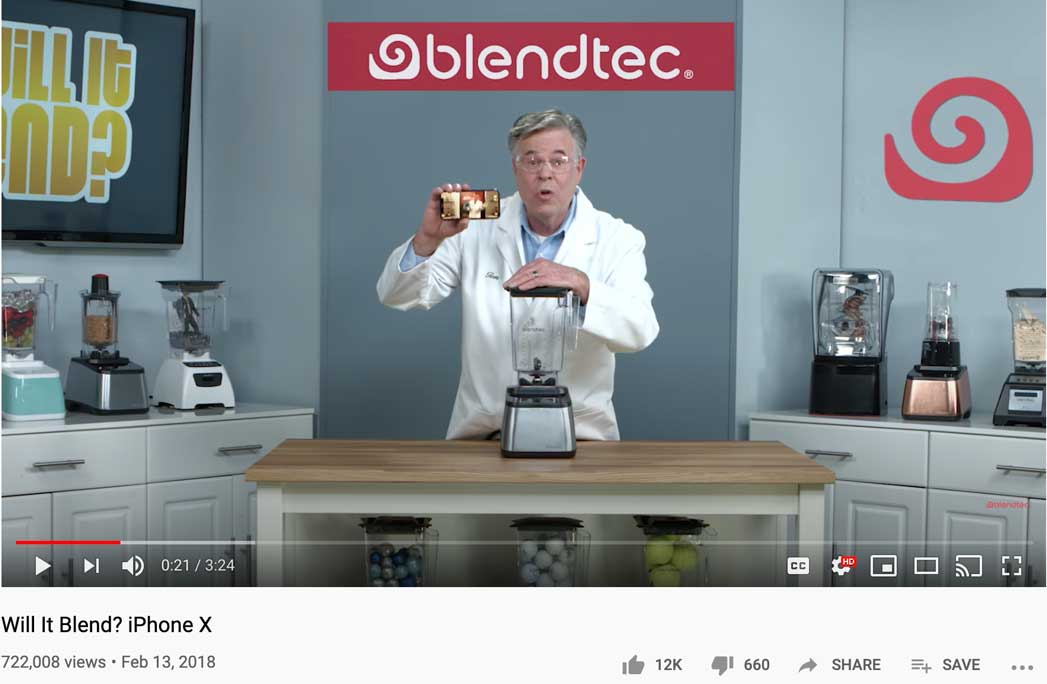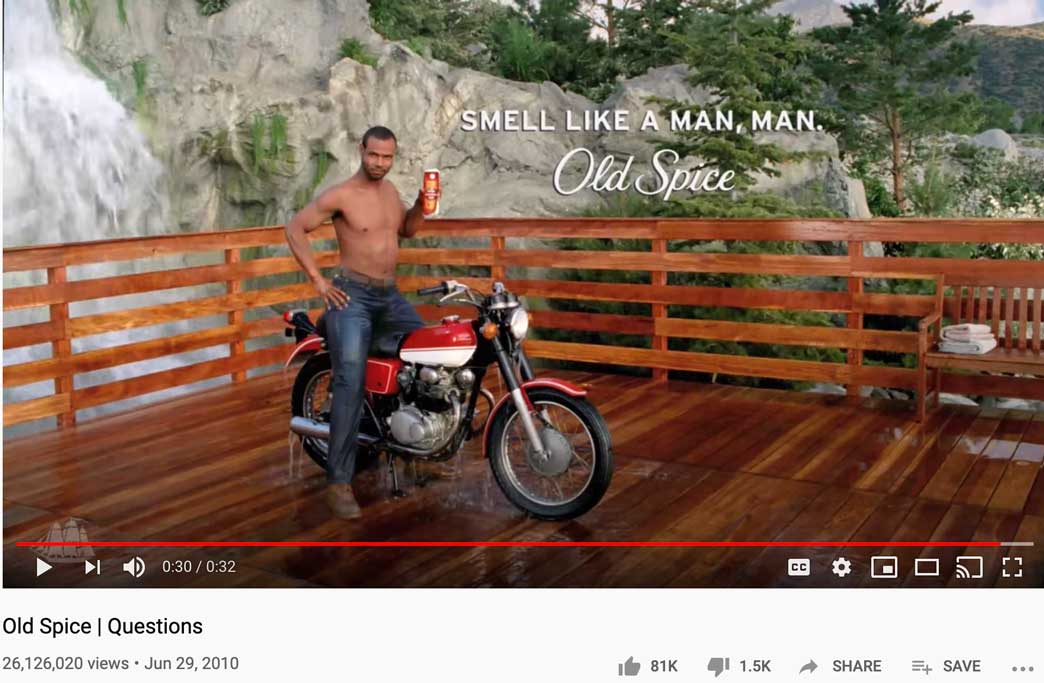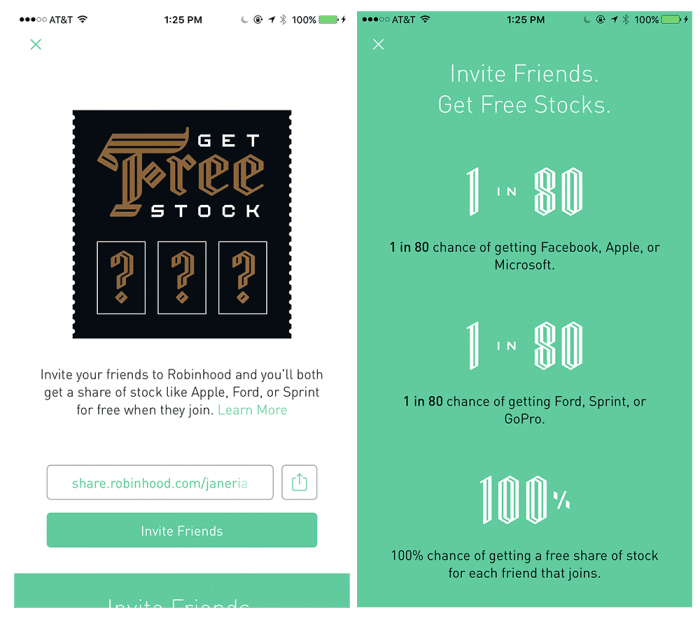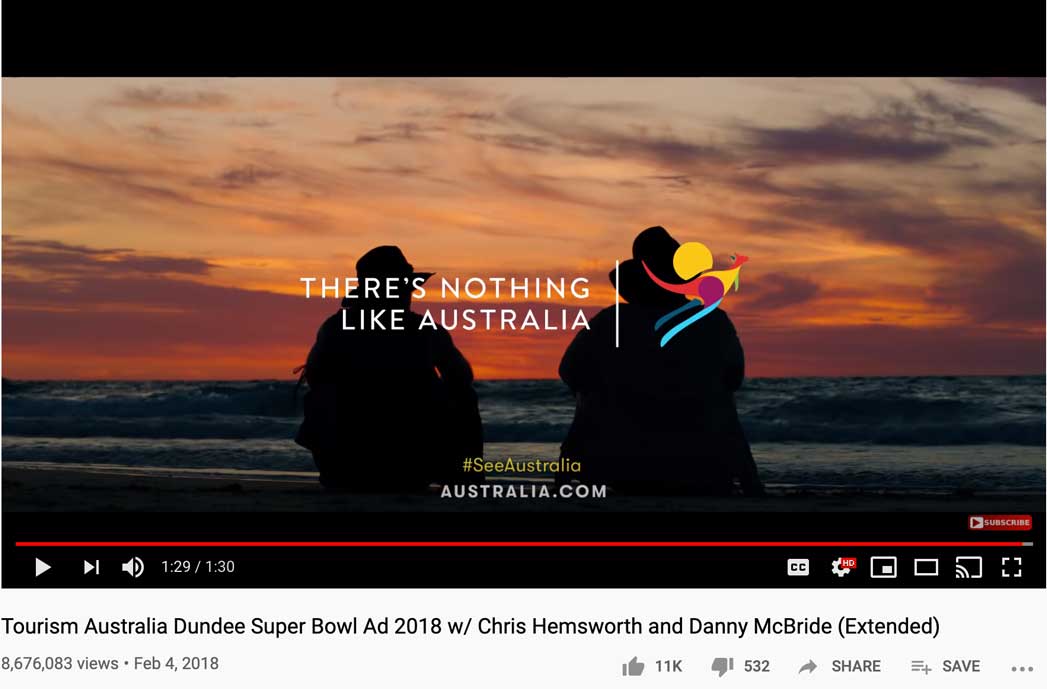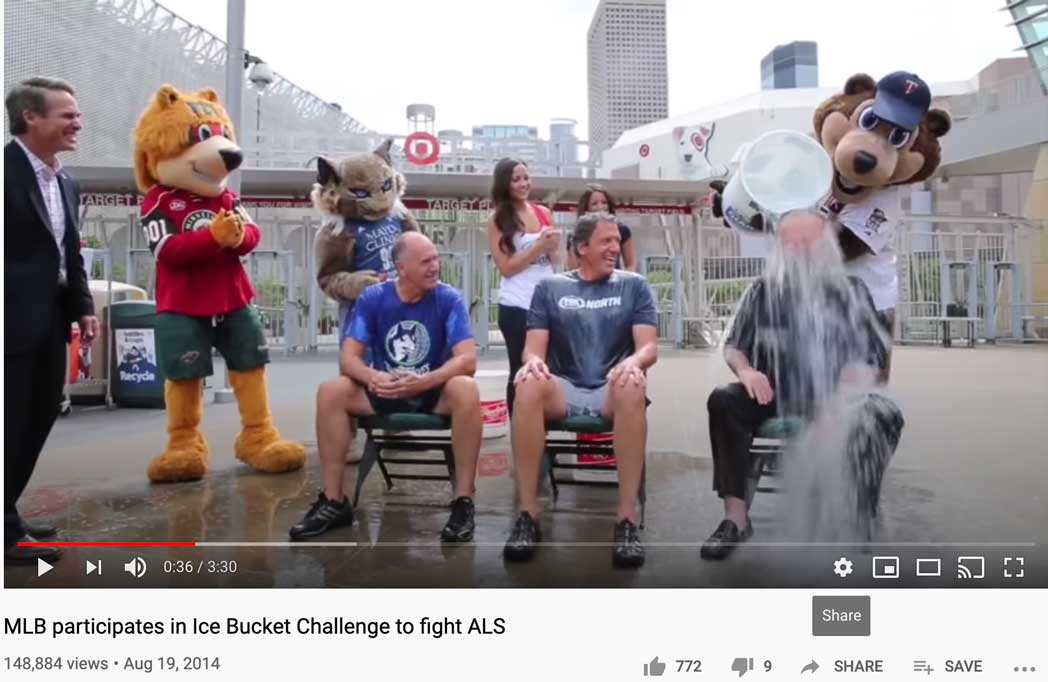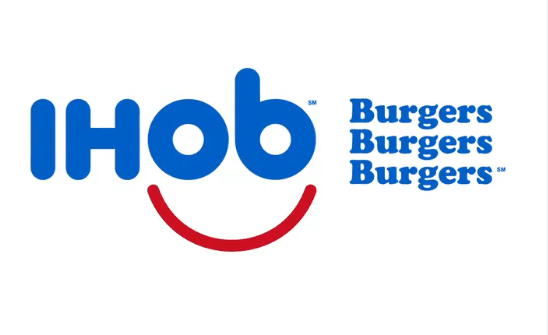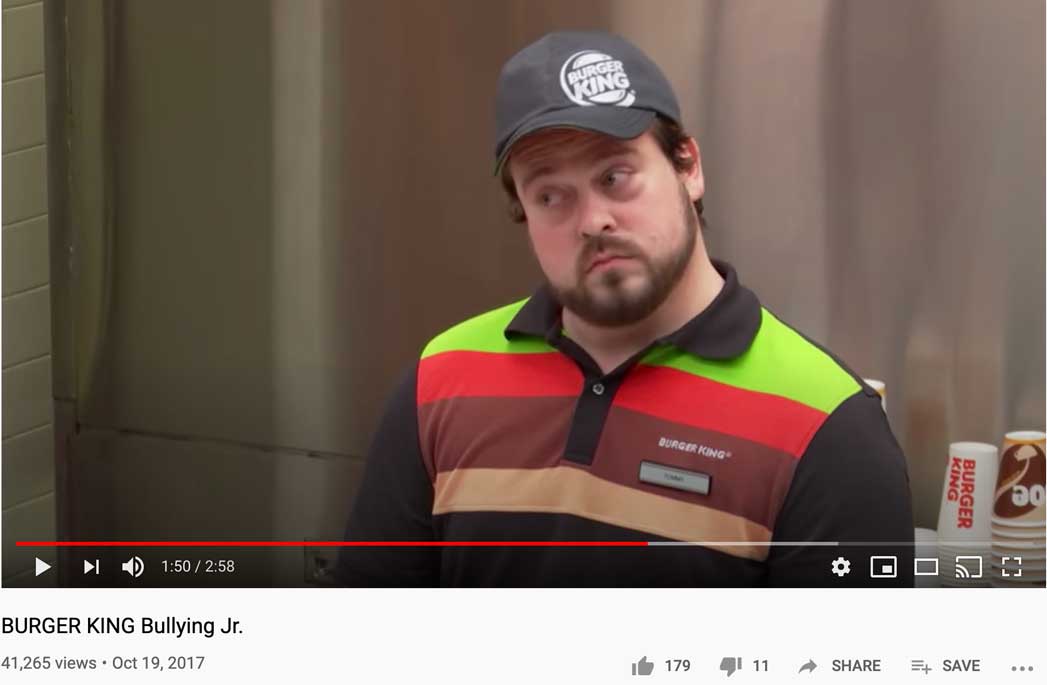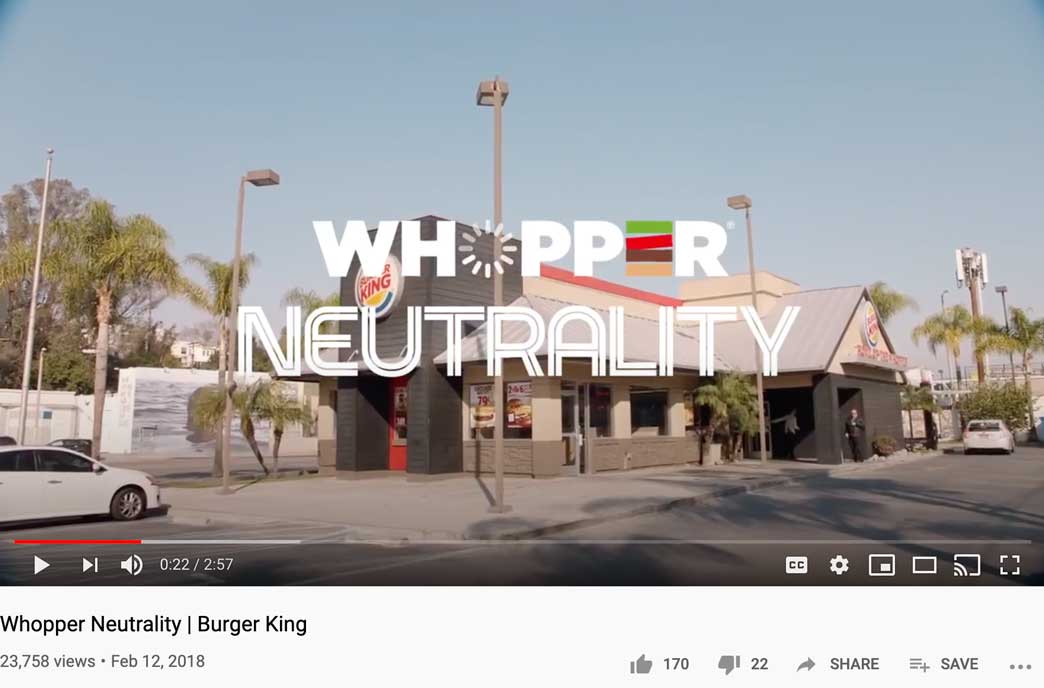Chances are you’ve probably seen that funny looking cat by now.
Every month there seems to be a new viral video or meme. If you’re a marketer, I’m sure you’ve dreamed of working on a piece of viral content. After all, it could be your claim to fame. We all have our favorites, branded or not, that just stick with you. But what makes a piece of content a viral marketing hit? Is it all just dumb luck and a bit of creativity?
I’ll admit, it does take a little bit of both, but behind every piece of viral content is a solid marketing strategy. For this very reason, I’ve added a “takeaway” section to some of my favorite viral campaigns below. However, before we dive into the examples, let’s take some time to break down viral marketing and its advantages and disadvantages.
What’s viral marketing?
Viral marketing is any marketing tactic that encourages rapid natural online sharing and accelerated word of mouth. Content, usually generated by a brand, spreads from user to user like a virus and subtly drops its marketing message along the way.
Social media is the perfect breeding ground for this type of marketing after all their platforms are built for sharing. Harnessing this power is like wielding a double edge sword. You have to remember for this to work, a lot of the power falls in the hands of the users. While you could win big, your campaign might be misinterpreted and cause more harm than good.
Why viral marketing is worth the risk
The exposure pays for itself: What makes a campaign viral is the use of word of mouth. Sure, you might have to spend a little money, in the beginning, to get things moving. But once it starts working and referrals start flowing in, you can cut back on your advertising spend.
Plus, the next time you run a campaign, you’re more likely to reach a larger audience thanks to the brand awareness built during your viral campaign.
A viral campaign is branded but doesn’t feel like an ad: With most viral campaigns, the intention is never to hard sell. Instead, it’s usually about driving brand awareness and giving people something to talk about. The decision to like or share comes down to the user, so it never comes across as invasive.
Viral marketing is trusted, thanks to peer-to-peer sharing: We all know the power of referral marketing, and it’s no different when it comes to viral content. The simple fact that a friend is sharing it with them increases their chances of viewing your brand in a positive light.
Viral marketing is the quickest way to build brand awareness: While we typically focus on sales with advertising, there’s no denying the benefits of viral marketing in terms of lead generation. It’s true, most people won’t be ready to buy from you, but they will certainly keep you in mind when the time comes.
The downside to viral marketing
If poorly executed, you can go viral in the wrong way: What may be a positive and fun experience for some, could be a negative experience for others. You never know how some people could take your message or sense of humor. Once your campaign is released, it will take on a life of its own and could be impossible to handle.
Viral marketing might not result in long-term loyal customers: Sure, if your piece of viral content is around a product, you might see a huge spike in sales. But more times than not, these new users are just riding the trend and might not even be your ideal customers.
Viral marketing is not very consistent, and you never know how long it will last: It’s hard to create viral content, let alone replicate it time and time again. Sure, there’s been companies in the past that have done so, like Old Spice or Axe. But there’s no way to tell how long a trend will last — making it hard to build a scalable strategy around.
It can be tough to measure the results of viral marketing: If you want to scale your marketing efforts properly, you must always measure your results. Since viral marketing can be very hit or miss, there’s no real way to tell what your ROI will be. Some campaigns may catch fire right away, while others could take months even to sizzle. And some won’t gain any traction at all.
Even if you manage to go viral, just the nature of the engagement can be hard to measure. After all, how many people just watched your video on their friend’s phone? There’s no way to track that.
How to equip yourself to go viral in the right way?
While some of that might sound scary, you should be glad to know that there are viral marketing tools tactics out there, and agencies such as the Harmon Brothers busting out hit after hit gives us hope that we too can master the process. Listed below are a few key things to keep in mind while building your campaign.
- Know your target audience: Understanding your audience is marketing 101, but for a piece of content to spread, you have to get it in front of the right people. It’s all about creating content that speaks to your audience and connects with them on an emotional level.
- Make sharing easy: You shouldn’t create content and just pray someone will share it. Instead, you should be proactive and make sharing your content built into your campaign. It can be something as simple as a referral program or adding share buttons to your blog post.
- Know your goals, and keep them at the forefront: Why are you creating this campaign or trying to go viral? Is it to increase your following, drive awareness for a case, strengthen your SEO, or maybe it’s to promote a special event. The moment your attention is apparent, you can start analyzing and optimizing each step of the process.
- Keep your message clear: Keeping content simple and easy to absorb is a crucial element for any marketing campaign. The content you create should get to the point quickly before you lose your audience’s attention. Remember, you only have a few seconds to make an impression.
- Viral content pieces aren’t the norm: They’re the unicorns of marketing. However, they all share similar characteristics that increase their chances of going viral. Let’s take a deep dive into some of my favorite examples and highlight the underlying marketing strategy that made them so effective.
Blair Witch Project (viral marketing before social media)
Quite possibly, the only viral marketing campaign of the ’90s. The Blair Witch Project left people questioning what was real and make-believe. I remember the shock and awe I felt when I found out that it was all a hoax after believing it was real for months. But that was intended, and the premise was simple. They pitched the movie as a documentary, not a horror film.
“In 1994, three students vanished while filming a documentary near the woods of Burkittsville, Maryland. One year later. Their video was found, but no bodies were recovered…”
But with a budget of only $60,000, no one could have ever imagined that the film would go on to gross $248 million. The low budget movie couldn’t rely on special effects or traditional marketing strategies, like their Hollywood counterparts. Instead, they leaned into the story and relied on the newfound popularity of the world wide web. (Remember, this was 1999.)
They created a dedicated website that was more about the urban legend than it was about the movie. This tactic paid off and built credibility that the myth about an evil witch living in the woods of rural Maryland was true long before the film hit screens. They went as far as creating dedicated pages outlining all the significant events in the Blair Witch’s history, and provided background on the missing students, including interviews with the victims’ families lamenting their untimely disappearance. They even started dripping information into threads on forums dedicated to “urban legends.”
They fooled so many people that the actors playing the main characters (who used their real names) were actually presumed to be missing or even worse dead. Some people even sent sympathy cards and money to the actors’ families as a show of support in their time of need.
While everyone might not agree with their approach, their strategy certainly worked with their website, receiving 20 million page views before the film was even released. And this was back when half the people on the internet were still using dialup.
Takeaway
It’s highly unlikely that this strategy would work today with the rise of social media and people becoming more aware of fake news. But their use of storytelling most certainly does. A great way to connect with any persona is through a story.
Storytelling has been around forever, and for a good reason. It’s how we connect with one another. For users to form a personal connection with your brand, your company’s story must be authentic, creative, and inspirational. By giving you products/services a voice, you can take your target audience on a journey they yearn to experience.
Visible’s “Free Massages”
Sometimes viral marketing is all about being relatable. We all have that one friend who likes to act as if they work for the grammar police, and low-cost cell phone service provider Visible was counting on it. Visible could possibly be the most recent viral marketing campaign (at the time this was written), and it was executed beautifully.
Visible knew if they were going to thrive in an overcrowded marketplace, they would have to find a way to cut through the noise and connect with their customers in a more personal way. To do so, the team came up with a cheeky idea and ran several billboards throughout its headquarters city of Denver, Colorado. The billboards read loud and clear, “Unlimited massages, minutes and data on Visible’s $40/mo phone service.” If you’re like most people, you’ve probably made this mistake in the past, or auto-correct did it for you.
Instantly, the typo started getting called out on social media. People were suggesting that Visible should fire their marketing team, or at least hire a new copywriter. Of course, it was all a plan to drive brand awareness, and a couple of marketers chimed in that they got the joke.
A few weeks after launching the billboards, Visible started dropping little hints on social media that they had a surprise planned. They announced that the typo was intentional on Twitter and informed their followers that they would indeed be offering unlimited massages on September 21 in Denver’s Union Station. By doing so, Visible was able to introduce a cheeky brand voice, while making good on their promise.
After all, the average sales cycle for customers planning on switching cell phone providers is about three months. So Visible knew if they were going to drive sales, they would have to pull off a stunt that would stick with a prospect for at least three months.
While it’s hard to put a metric on this type of brand awareness, in terms of KPIs, lead generation and service sign-ups topped the list – proving that sometimes it’s best to be transparent. After all, we make typos.
Takeaway
I don’t think putting a typo in your ad will help your business. However, I do believe being more transparent will. It might not seem like it, but that was honestly the goal with Visible’s viral marketing stunt. They wanted to show that they are human and make mistakes like everyone else, but they own them. By being more transparent with your brand, you can help build trust with your customers, drive innovation in-house, breed honesty among staff, and open yourself up to receive more customer feedback.
Wendy’s Tweets
Wendy’s is known for three things: square burgers, the Frosty, and roasting people on Twitter.
At the heart of the burger chain’s branding strategy is one central tenet: the people at Wendy’s are serious about their food, but not themselves. From releasing a hip-hop mixtape and flirting with celebrities to relentlessly roasting McDonald’s and Burger King on Twitter. Wendy’s is the witty snark friend of the fast-food industry, and there seems to be no limit to their sass.
At the beginning of 2017, Wendy’s had just over 1 million Twitter followers. The brand added 1.2 million new followers by the end of the year, bringing its fan count to 2.24 million.
It all started with a simple tweet from Carter Wilkerson that read: “Yo @Wendys, how many retweets for a year of free chicken nuggets?”
Wendy’s reply was meant to be sarcastic: “18 million.” Figuring he wouldn’t even dare try.
But Wilkerson gladly accepted the challenge and started reaching out for support online, asking people if they would retweet to help him win his prize. His tweet ended up spreading like wildfire as more and more people started retweeting. They were even getting some news sources to join the fun.
While he didn’t reach 18 million, he did do way better than Wendy’s ever thought possible, getting over 3 million retweets and becoming the most retweeted, tweet, in Twitter’s history. Don’t worry. He was well deserving of the prize in Wendy’s eyes. After all, this single tweet became a massive win for the fast-food brand, at absolutely no cost to them.
Well, besides the free nuggets.
Takeaway
Your brand’s voice comes down to your business’s tone and identity. However, each social media platform has its own unique purpose, and users will have different expectations on each platform. While your brand’s identity must remain consistent across all channels, you should tweak your message and tone depending on the platform you’re targeting. You should view different social media channels as an opportunity to experiment and show off various aspects of your company’s personality.
Will it Blend? (BlendTec videos)
Will it blend or not blend? That is the question.
“Will It Blend?” is a YouTube series that is meant to be an infomercial parity demonstrating the power of the Total Blender — created and hosted by Blendtec founder Tom Dickson. Who attempts to blend random everyday items to show off the power of his blender.
And just to be clear, we’re not talking about smoothies here. Tom blends everything from magic markers to iPhones and even an Amazon Echo.
I know what you’re thinking. WHY?
The answer is simple. How do you make a boring product fun? You make it do something unexpected. Most people only buy a blend once every five years, and with every blender company using the same pitch, that their blender can “unlock the hidden taste of your food” or something like that. This only leads to more consumers relying on price over features.
Seeing this trend, Blendtec decided to go in a completely different direction, utilizing their unique idea, which almost has nothing to do with traditional blender selling points. Blendtec has been able to build brand awareness in an otherwise nameless market. And in regards to content marketing, Blendtec is by far the most successful company of its kind.
Blendtec has topped the charts for kitchen appliances with more than 190,000 Facebook followers, 35,000 Twitter followers, and 877,000 YouTube subscribers.
That’s a tremendous following for any business, let alone a blender.
Takeaway
One thing every startup can learn from Blendtec is how to find your unique selling proposition (USP). If someone asked you what makes Blendtec so good or unique? The answer would be simple. Their blender can blend anything. (trust me, I’ve seen it)
But for countless startups, this question isn’t so simple. The secret to unlocking your USP is understanding what your ideal customer wants and making sure you can deliver on what you promise. Sounds simple enough, right? But don’t be fooled – this exercise is harder than you think. It takes a lot of work, brainstorming, and some trial and error (A/B testing) to see what works.
Here are some ideas to help get the juices flowing:
- Narrow your target market
- Solve a problem
- Convenience / Usability
- Reliability/Dependability
- Be innovative
Old Spice (“The Man Your Man Could Smell Like” campaign)
One of the most defining moments in digital marketing history was back in 2010 when Old Spice hired an ex-football star, Isaiah Mustafa, for a YouTube ad. The video convinced other mainstream advertisers to push the boundaries if they wanted to connect with the younger generation. Even heavily influencing a few different viral marketing campaigns on our list.
The video starts with Isaiah stepping out of the shower, wrapped in a towel holding a bottle of Old Spice body wash. Isaiah goes on to perform a series of tasks that would make any women blush. From taking her on a boat to turning an oyster into a handful of diamonds. And even getting her tickets to that thing she cares so much about. The point of it was that your man wasn’t him, but he could smell like him if he stopped using women’s scented body wash and started using Old Spice.
Their audience absolutely loved it, gaining over 5.9 million YouTube views on its first day, and currently has over 56 million views almost ten years later.
What made its success all the more astonishing was that the campaign was for Old Spice, a neglected Procter & Gamble brand that had lost ground to more hip rivals such as Axe Bodyspray. But with a 70-year heritage, surely the brand could not be better positioned to be an expert on masculinity.
While the video might seem random, Old Spice was brilliant and extremely thorough when it came to targeting their audience for the video. It may seem like they are going for pure shock value or humor, but that’s not the case. The ad was tailored for who was buying the product at the time, which was women purchasing the product for their loved ones. They were able to position themselves that Old Spice was able to give the men in the life all the qualities women are looking for in a man.
Old Spice was able to do something very difficult, which is creating content that not only stands out but is funny and appeals to their audience’s values. Their videos are so entertaining you honestly forget you’re being sold something at the moment.
Takeaway
If you want to create a piece of viral content, avoid the hard sell!
Now, of course, sell your product. If you watched the video above, you’d know what I’m saying. While they’re listing off a ton of reasons why you should use their product, they never mention anything about a sale or limited time offer. After you finish watching an Old Spice ad, you’re too busy laughing to think about running to the store and buying some body wash. Instead, you’re sitting on the couch, sharing it with friends. You should always try to invoke some kind of emotion, regardless of what it is:
- Fear
- Joy
- Anger
- Sadness
- Disgust
- Laughter
Squatty Potty (unicorn video)
By now, you’ve probably heard of Squatty Potty. Aka, “the stool for better stools,” which is a small white, inconspicuous stool that rests around your toilet. But no matter how many jokes you crack at it. Talking about bathroom humor, let alone the actual process of using the restroom more efficiently, can be a hard sell.
But Squatty Potty, with help from the Harmon Brothers, was able to create a viral video about ice cream, Squatty Potty, and a unicorn. Instead of talking about poop, they thought, why not talk about soft-serve ice cream. Turning poop jokes into marketing gold
The result of the joke was the infamous SquattyPotty unicorn ad, in which a tiny magical unicorn explores the benefits of the product while expelling rainbow sherbert ice cream. It’s pretty hard to explain it without getting too graphic, but it’s goofy, witty, and compelling all at once. The main point of the ad is that the unicorn is excellent at pooping, but you aren’t.
According to the Harmon Brothers, the campaign generated a 400 percent increase in retail sales, garnered a 600 percent increase in online orders, and has acquired SquattyPotty over a million Facebook shares within the first quarter of launching. By now, the video has over 37 million YouTube views, and still to this day continues to climb.
No matter the industry you’re in, a little sense of humor can go a long way.
The Harmon Brothers understand this and take big risks all the time. They’ve been responsible for several viral videos include PooPourri’s viral video back in 2015. It’s painfully apparent that most companies find it impossible to be genuinely entertaining. That’s why they recommend avoiding one-size-fits-all humor when it comes to advertising. If you take a look around social media, it’s never the soulless infomercials that get shared. It’s the funny videos or the ones that stir emotions.
Takeaway
While humor won’t work for every business, for those with products who are trying to be more relatable, there’s no better tool. But you have to stay consistent in your marketing and make sure it fits your brand. Humor doesn’t work as well if you only us it in one ad. Now, I’m not saying you have to be funny all the time, but if you want to make people laugh, they have to know you’re tone.
RobinHood app (pre-sale)
While most of the companies we’ve spoken about so far have created some crazy and unique content. RobinHood kicked it old school and focused on designing a seamless referral marketing campaign. RobinHood was about to build their beta list to nearly one million users before launch.
That’s one million users eagerly waiting to use their product.
While I can’t guarantee that you will gain a million potential users, you can certainly expand your pre-launch reach or waiting list by implementing some of Robinhood’s techniques.
FOMO. Fear of missing out. It’s one of the oldest and still most powerful marketing tactics out there, instead of inviting users to sign up for a mailing list. Robinhood made the waiting list invite-only, appealing to its early adopters’ desire to be the first to benefit from their product/offering.
After all, it was a fantastic deal – “$0 commission stock trading. Stop paying up to $10 for every trade.”
- Keep the process simple: When a potential user arrived on the landing page, only one CTA stood between them and the chance to use RobinHood: entering their email address. Giving users only one option; To opt-in.
- Gamification: When you signed up for RobinHood’s referral program, you were put on a waiting list. The higher you were on the waiting list, the sooner you got to try out the app (they didn’t release it all at once). After entering your email, the thank you page allowed you to view your position on the waiting list.
Conveniently placed underneath the waiting list was a reward-based invitation, to share RobinHood with just one click. The more people you shared with and signed up, the higher you climbed on the waiting list. The higher you rank on the waiting list, the sooner you would gain access. This scoring system drove countless people to spread the word about RobinHood and share their link as often as possible.
Takeaway
While referral marketing is one of the most effective ways to drive word of mouth and can be implemented in just about any business, RobinHood took it a step further by creating a referral loop. Referral loops incentivize customers to refer as many people as possible by offering a reward for each new customer that successfully signs up via invite.
RobinHood did this through the gamification process, giving early access to those who referred more. Uber did it with their referral program, give $10 get $10. Countless businesses have done it to create a viral effect. If you’re only asking for three referrals, you’re missing out.
Australia Tourism (Dundee)
By far, the most expensive viral campaign we’ll be covering today. Australian Tourism spent over 36 million on a campaign to make Americans want to visit down under – and broke a lot of Crocodile Dundee fans’ hearts while doing it.
YouTube trailers for the new Crocodile Dundee, reboot Dundee: The Son Of A Legend Returns, had viewers laughing and confused. What was McBride, the star of Eastbound And Down doing paying the son of Crocodile Dundee alongside Australian A-lister Margot Robbie, Russell Crowe, Chris Hemsworth, and Hugh Jackman?
The teaser trailer even went as far as acting as if it were a real movie, announcing it was coming to theaters near you in 2018. Admittedly, Tourism Australia said it was pretty hard to keep the hoax a secret leading up to its big reveal during the Super Bowl.
The ad was part of a strategy to target the upper-class, or high spending travelers, rather than targeting the mass market.
But did it work?
Takeaway
Sometimes you have to spend money to make money. While it’s hard to tell if the campaign accomplished the goal of driving high valued travelers, one thing is certain. Their ad did drive a lot of exposers.
According to the advertising agency Amobee, Tourism Australia’s digital mentions increased by 675% in January of 2018. Finishing second for global digital engagement in regards to Super Bowl-related content. (Of course, Budwiser was number 1. As usual)
However, down under, 50% of Super Bowl ad-related engagement mentioned Tourism Australia. Leading up to the Super Bowl, Amobee found only an 11% difference between engagement for Crocodile Dundee and Tourism Australia, suggesting that the gag-trailer drove much of its popularity.
If possible, you should always try and align your content with other trending or popular topics. It’s a great way to give your content a boost and piggie back off of other’s engagement.
ALS Ice Bucket Challenge
I’m sure you remember back in 2014 when you couldn’t hop on social media without seeing a ton of Ice Bucket Challenges.
In case you were living under a rock, the challenge involved people dumping buckets of ice water on their heads, sharing a video of them doing it, and nominating friends and family to give it a try. To help build awareness for amyotrophic lateral sclerosis (ALS), which is a progressive disease that causes nerve cells to deteriorate over time and eventually leads to total paralysis and quite often death.
A combination of social currency, challenge, and emotion has given this campaign a life of its own. It’s been compared to a dual, with participants calling out friends and family, making it very hard for them to say no. Social media has applied peer pressure to the challenge, convincing more people to step up and participate. It’s kind of the most epic chain letter in that respect.
Ego aside, the ice bucket challenge is for a good cause – making it even harder to say no.
But while millions have participated around the world, the challenge has received some backlash. With many people questioning how many participants actually donate money or even take the time to understand the disease better. Others said while the cause is good, it’s taking attention for other worthy causes, and some environmentalists criticized that it is a waste of water.
While those might be some real concerns, the numbers speak for themselves.
The ice bucket challenge raised over $115 million in donations that year, compared to its previous year of $2.1 million.
Takeaway
While it’s hard to phantom what kind of engagement metrics the Ice Bucket Challenge generated, one driving force that is often overlooked is the challenge. Everyone loves a good challenge, or at least they hate being called out. Throwing that challenge on social media almost makes it impossible to say no. But while you won’t see this tactic very often in b2b or eCommerce. You will see it all the time in the gaming industry. Think about posting your high score, or challenging a friend to a game.
IHOP/IHOb (name change)
Last year when IHOP announced that they were changing their name to IHOb, without explanation, people were left scratching their heads asking why. Overnight, people started throwing out ideas of what the change could mean. Some were mundane like maybe it stood for the International House of Brunch. While others were pretty practical, for example, perhaps it was the International House of breakfast. Very few people guessed that the “b” stood for burgers.
While not everyone was excited about the big reveal, IHOP felt it was the only to let people know they take their burgers just as serious as their pancakes.
Love it or hate it, one thing is for sure the campaign got people talking.
While IHOP provided no information on if the marketing ploy increased sales or foot traffic, after the marketing stunt, more people will now likely associate IHOP with burgers than if they just did a simple menu change.
Takeaway
Sometimes secrets drive word of mouth. Anticipation and mystery are two of the oldest marketing tactics. With sitcoms using cliffhangers and the infamous “on next week’s episode” to hook viewers in. To business using mystery to build hype around their product. Like when Segway claimed they would be revealing a new product that would change transportation forever. They had the whole world wondering what could this fantastic product be.
Adding a little mystery to your marketing can go a long way. Some simple examples would be to have a surprise guest on your podcast. Or maybe a surprise headline at your bar’s open mic.
Burger King (bullying and net neutrality videos)
Wendy’s might own Twitter, but Burger King rules YouTube.
Unlike their counterpart that uses Twitter as a standup routine, Burger King treats YouTube as their soapbox providing the masses with funny public service announcements (PSAs). Their first viral PSA was back in 2017, with the launch of their “Bully Jr” campaign, in honor of National Bullying Prevention Month.
The video portrays an alleged social experiment to see how customers would react to the staged bullying of a teenager versus the “bullying” of their Whopper Jr. In the restaurant, a teenage actor was being bullied by three other teenagers, while in the back, a Burger King employee was bullying their Whoppers (he was punching them).
Sadly, 95% of the customers complained about their burger, with the employees responding if they ordered their burger bullied or “unbullied.” While only 12% of the customers stood up to the teenager bullies, we would think in an ideal world we would all stand up to bullies, after all, that’s what we tell kids to do, but in reality, that’s not the world we live in today. If you haven’t seen the video yet, I highly recommend it, and I guarantee it will put a smile on your face.
A year later, Burger King launched another viral PSA. This time to inform the masses about another issue, threats to net neutrality. The reason why this video was so compelling was that Burger King wasn’t trying to sell more burgers or market a new product. No, they were trying to prove a point to the US government about net neutrality and did a better job explaining it than Congress.
Net neutrality is that internet service providers (ISP) should provide equal service and content regardless of the source, and without favoring or discriminating against certain user content, applications, equipment, source address, or any other method of communication.
In layman terms, if congress passed a bill in regards to net neutrality, they could allow ISPs to charge a premium for faster internet service. Think about it as a fast lane and a slow lane. You could pay $45 a month and get to work in 20 minutes, or you could pay $120 a month and get to work in 10 minutes. You would still be leaving for work at the same time and even take the same route, but you would get there faster if you paid a premium.
Once again, Burger King set up hidden cameras and hired actors to teach Whopper buyers a valuable lesson. In the video, patrons are charged more for the same quick service they’ve come to love. But for customers who only wanted to pay the regular price of $4.19 would have to wait twice as long for their food. Burger King employees would even intentionally hold their food until the time was up – down to the very last second.
I honestly don’t know what I would do if this happened to me. A few patrons looked baffled, while some cursed, and a few even snatched the bag from the employee’s hands. For a few seconds, I thought one customer was about to turn violent, but thankfully it never got to that point.
They even had a pricing board that showed customer MBPS, referring to “making burgers per second,” which was a joke referring to megabits per second in web-talk.
While the “Whopper Neutrality” campaign wasn’t quite as inspiring as the “Bullying Jr” campaign, before it, they certainly put the issue in the simplest, most relatable terms for everyday people. Burger King’s viral campaigns have never been about driving sales, just driving awareness, and that’s what makes them so great.
Takeaway
Burger King uses the most relevant topics of the day to create their PSAs. By using topics that are already relevant/trending in the news, Burger King can capitalize on the engagement generated by an already prevalent issue.
If you’re focused on growing your business and maximizing traffic to your site, you should create a content calendar that blends both evergreen content – articles that are always relevant – with timely releases that capitalize on another trending topic. While evergreen content is excellent, more popular topics tend to acquire more unique backlinks, which in most cases, will only strengthen your site link profile, if from a reliable source. Providing you – and your website – a solid foundation for growth.
Conclusion
While I hope this information got your creative juices flowing, one thing to always remember is that viral marketing isn’t for every business. If you’re just starting your company, I would recommend holding off on even attempting it.
I’ll admit some of the viral marketing examples above seem like the stars aligned, and they got a lucky break. But that simply isn’t true – every company listed above put a lot of time and effort into building a solid marketing foundation before attempting their viral stunt. If you don’t have the proper tools and onboarding process laid out, your campaign can go viral for all the wrong reasons, with customers getting frustrated with their experience.

